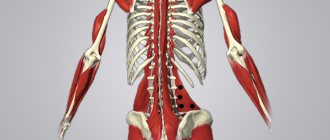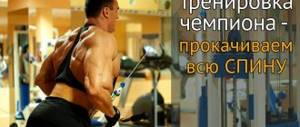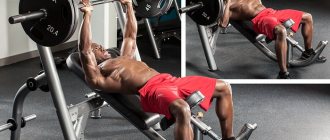The spinal column and the musculoskeletal system as a whole are the foundation of the human body. Thanks to the skeleton, people can hold their body upright, and it is also a kind of frame that protects the internal organs. A colossal load falls on the spine, and the lower back is the most vulnerable section. Already at a young age, pain occurs in this area. But simple exercises for the lower back can quickly demonstrate the effect and relieve unpleasant phenomena.
An elderly person’s back often hurts due to inevitable age-related changes. Due to upright walking, which causes increased stress on the spinal column, the vertebrae become deformed over many years of life. Painful sensations in the lower back in youth are the result of one’s own laziness and poor lifestyle. Experience shows that the simplest gymnastics for the lumbar spine is enough to prevent lower back pain or get rid of it.
Unpleasant sensations arise due to a hypodynamic lifestyle. In case of hypothermia, the situation worsens. Negatively affects the condition of the sacral spine and excess weight. Unbalanced nutrition and excessive exercise are also negative factors. But if you regularly perform exercises to strengthen the sacral spine, the likelihood of early development of pathologies and the appearance of pain syndrome decreases. There are also gymnastics that will help relieve pain, significantly alleviating the condition during an attack.
How to strengthen your psoas muscles
The adult human skeleton consists of many bones - there are 206 of them in the body. There are only five vertebrae in the lumbar region, which bear a colossal load. Strengthening the lower back is necessary so that the muscles in the lower back form a powerful frame to support the spine.
The area from the middle of the body to the hip joint is the most vulnerable. It is influenced simultaneously by two factors. On the one hand, it needs to provide support for all the upper parts of the spine. On the other hand, the lower back is a kind of damper that dampens the impulse when pushing the legs away from the support, which happens when walking and running.
Ideally, taking care of weak back muscles by performing exercises to strengthen the lumbosacral region is necessary for preventive purposes even before the onset of discomfort and pain. But even if the spine is already signaling problems, training for the lower back will be beneficial. If you ignore alarm bells, this is fraught with serious consequences:
- Over time, structural irreversible changes in the intervertebral discs occur;
- with limited motor activity and a weak back, protrusions and hernias form;
- there is a high probability that the deformation of the vertebrae will lead to pinching of the spinal nerve roots.
Doctors prescribe a set of special exercises to strengthen the lumbar spine, even with diseases of this part of the body. However, this should be gentle therapeutic exercises, and you should not even think about stress at the therapy stage.
What muscles are being worked on?
The anatomical structure of the muscular frame on the upper rear part of the body is quite complex. But the lumbosacral region is poorly supported in this regard. In fact, along the lower back lie the spinal erector muscles. But it is necessary to work not only with them.
To strengthen your lower back, you should engage your lower latissimus dorsi muscles. Interestingly, exercises for back pain also include the abs: they are pumped to ensure even support for the spine on all sides.
Also, to strengthen the lower back, it would be correct to work on the lower serratus muscles. They are located at the junction of the lumbar and thoracic regions. In cases where there are pathologies or changes in the spine, a doctor creates a set of exercises to relieve lower back pain.
Benefits of Exercise
Pharmacology is ready to offer a lot of creams, gels and tablets for a sore back and discomfort in the spine. They help relieve unpleasant symptoms. But if you do not train the muscles in the lower back, the problem will not be solved: without exercises for the lumbar spine, the pain will return again and again. And the worst thing is that the bone frame will continue to deform, pathologies, age-related changes and diseases will be inevitable.
It is necessary to understand that without loads and targeted strengthening, the lower back muscles will weaken. So over the years the condition will only worsen. And vice versa - exercises help with back pain, gradually creating a reliable muscle frame. If you regularly strengthen your lower back muscles through moderate physical activity, such work will soon bear fruit:
- when stretching and relaxing muscle fibers, painful sensations go away;
- competent work on the muscles helps to improve blood flow, which ensures adequate nutrition of the vertebrae and discs;
- with exercises on the lumbar muscle, the spine as a whole is strengthened, so that a person feels a general improvement in well-being;
- Due to the formation of a muscle corset, the physiological distance between the discs is restored, so that pinched nerve roots are released.
If your lower back hurts, you should exercise after consulting a doctor. Especially when there are such alarming symptoms:
- constant pain that does not go away for weeks;
- crunching in the lumbosacral region when moving;
- pain syndrome that limits a person’s mobility;
- unpleasant sensations accompanied by dizziness, nausea and weakness.
When the condition is not so dire, you can pump up the lower back yourself. However, exercises for the lumbar spine should be performed especially carefully. If the muscle corset is completely weak, it is better to start with gentle pumping.
Contraindications to gymnastics
Despite the fact that doctors recommend performing certain physical exercises even with lower back pain, this does not mean that you can safely exercise without consulting with specialists. In some cases, back exercises are contraindicated!
If you experience severe, persistent pain in the lower back, you should consult your doctor to see if exercise is even appropriate. Because it is prohibited in the presence of hernias or tumor formations! It is not recommended to do back exercises if you have lower back pain due to an exacerbation of a chronic disease.
If a person has recently been injured, he also does not need to rush to work on the lumbar muscles. Most often, doctors do not advise performing exercises if there is acute back pain or severe sensations in the lumbar region. The only exceptions will be special movements from the complex of therapeutic physical culture, which are taught to the patient by a specialist in a medical institution. They help relieve an attack of acute pain.
In case of kidney diseases, the patient must also consult with a specialized doctor before starting training. For osteochondrosis of the spine and other pathologies of the skeletal system, exercises for pain in the sacrum and other unpleasant symptoms are resorted to after a visit to the clinic.
Back
Correctly selected back exercises will help improve your posture and eliminate back pain. The best exercise to strengthen your back muscles is pull-ups. To perform this exercise, you must have a crossbar. However, it is difficult to make it at home yourself. But, fortunately, you can find a crossbar on almost any sports ground. The essence of this action is that the athlete grabs the bar with his hands and hangs on it, after which he pulls himself up so that his chin is above the level of the bar.
Pull-ups for the back
Starting position on the carpet, on all fours, arms and legs placed shoulder width apart. Tighten your stomach, straighten your back and extend one leg back and the arm (on the opposite side) forward, thus forming a straight line. After this, you need to pull yourself up and hold the resulting pose for as long as possible. Slowly take the starting position. After 10 seconds, repeat the action with the opposite arm and leg.
Starting position lying on the carpet, on your back. The arms are placed along the body. Raise your legs and cross them together. It is not recommended to bend them. You need to repeat these steps in 2-3 sets of 5-10 times.
The person lies on the floor with his stomach down, clasping his hands at the back of his head. The essence of the exercise is to simultaneously lift the upper body and legs. In this case, you need to bend your back as much as possible. Then you can slowly return to the original position and rest for 5-10 seconds. This action is performed 8-10 times. In the future, such training can be easily complicated. To do this, when raising your torso, you need to move your arms in different directions.
Exercises for entry level
With sedentary work and a sedentary lifestyle, you can feel discomfort in the lumbar region very early. But no matter how much you would like to quickly start active training to strengthen your back, there is no need to rush to the gym! If you are already suffering from lower back pain, you will first need physical therapy. For example, you can perform the following simple exercises for the lower back:
- From a lying position on your back with your legs bent at the knees, raise your pelvis while inhaling. Hold in the top position for a couple of seconds and lower as you exhale.
- Lying on your stomach, stretch your arms up above your head, straighten your legs. Next, while inhaling, the upper and lower limbs are lifted off the ground, raising them to a comfortable height. As you exhale, lower your arms and legs and relax.
- Standing straight, with your hands clasped behind you, press on your lower back.
- Rise on your tiptoes, stand there for a few seconds, then lower yourself completely onto your feet.
- Sitting on a chair, clasp its edge with your hands, press your buttocks very tightly to the seat and rock back and forth.
The simplest gymnastics for the lower back helps relieve painful syndrome and improves blood supply to the problem area. Exercise therapy helps even in the acute period. However, before performing a set of exercises to relieve severe lower back pain, you should definitely consult a doctor.
Help with exacerbations
It must be emphasized that during the acute period, doctors prohibit pumping up the lower back muscles! Both men and women need to avoid putting stress on the spine at this time. A toned but sore back is a dubious achievement.
Therefore, instead of exercises to strengthen the lower back, let’s use a complex that takes the maximum load off the spinal column. If during the acute period the pain is unbearable, it is better to spend time in bed, and if you have to move, provide support to the problem area using a special corset. But you can also try doing exercises against lower back pain:
- Lying on your back on a hard surface, your legs should hang freely down. Next, take five calm, deep breaths and then slowly raise your body.
- Standing on all fours, you need to take a deep breath, exhale, tense your buttocks and hold in this position for a couple of seconds.
Strengthens the lower back muscles not at the acute stage. But exercises to stretch the muscles of the spine can also be useful, unless the pain constrains the whole body, preventing you from even breathing calmly. By stretching, the fibers relax, so that the developed lower back stops hurting.
Why do you need to pump up the press?
Against back pain, not only exercises for the sacrum and lower back are necessary. This vulnerable section is capable of supporting well-toned abs. In addition, by pumping up the muscles in the abdominal area, a good stretch in the back is achieved at the same time.
It's not just the lower back muscles that need to be strengthened to get rid of lower back pain. After all, if you work exclusively on the muscles of the back of the body, the body will literally become distorted. Therefore, to prevent curvature and to treat the lower back, exercises should evenly form the muscle corset - from all sides.
You cannot pump up your lower back and abs during the acute period! After relieving severe pain, you can begin the exercises:
- lying on your back, hands held at your chest, clasped;
- without lifting your lower back, you need to bend at the thoracic region;
- the press is pumped, lifting the shoulders and chest off the floor, performing up to 10 repetitions and about 2-3 approaches (depending on how you feel).
If you can perform the exercise in such a gentle mode, you can move on to the classic version. The clasped hands are moved behind the head, pumping the abs.
Back complex
“Kitty” is considered a very effective exercise for relieving pain in the lumbar region. It is done from a position on all fours. You must first bend over, lowering your stomach as low as possible, literally stretching it towards the floor, and pulling your head up. The hip joint is fixed at this moment, aimed at the ceiling. Then they bend in the reverse order: the back goes up, the head goes down, and the buttocks tuck.
Squats show good results for the sacral spine. However, they are not done in the acute stage: it is better to do it for preventive purposes so that your back does not hurt. Trained muscles will support the spine well, relieving the load from the vulnerable section. But you need to squat correctly:
- standing with your feet shoulder-width apart, hands behind your head in a lock, you need to move your pelvis back so that a deflection forms in your lower back;
- then slowly lower, bending the knees, until the moment when there is an angle of 90% between the thigh and lower leg;
- after holding for a couple of seconds, they return to the starting position.
The exercise is repeated 10 times - this is enough for a beginner. It is important to fully adhere to the technique. It assumes that the body, when lowered down, does not lean back or shake to the sides.
Correct technique.
Abdominal Exercise Program | We train the abdominal and back muscles
Prevention
Warm-up
As we have already written, the first part of the warm-up should consist of aerobic exercise.
In addition, perform stretching exercises that target the muscle groups involved in abdominal training. We recommend performing each exercise sequentially, one after the other, without pausing between them.
Exercise 1
This exercise effectively stretches the neck muscles.
Take the starting position - sitting on the surface, back straight, legs crossed in front of you at the ankles.
From the starting position, place your hands on the back of your head and slowly tilt your head forward, trying to bring your chin as close to your chest as possible. Stay in this position for ten seconds. Try to keep your back straight, do not lift your shoulders up, and do not forcefully press on the back of your head with your hands.
Exercise 2
This exercise effectively stretches the neck muscles.
Take the starting position - sitting on the surface, back straight, legs crossed in front of you at the ankles.
From the starting position, place your right hand on the opposite side of your head, your left hand on your left knee. Slowly tilt your head exactly to the side, as if trying to touch your shoulder with your ear. Stay in this position for ten seconds. Return to the starting position and perform the exercise in the other direction. While doing this, look straight ahead, keep your back straight, do not raise your shoulders up, and do not try to force your ear to your shoulder.
Exercise 3
This exercise effectively stretches the neck muscles.
Take the starting position - sitting on the surface, back straight, legs crossed in front of you at the ankles.
From the starting position, place your hands on the back of your head and slowly, smoothly tilt your head back, holding it with your hands. Stay in this position for ten seconds.
While doing this, keep your back straight, try not to arch your lower back or tilt your head back too much.
Exercise 4
The exercise effectively stretches the muscles of the back and buttocks.
Take the starting position - lying on your back.
From the starting position, bend your knees and pull them to your chest, clasp your shins with your palms. Raise your head and shoulders above the surface into a tucked position. Pull your chin toward your chest and hold this position for ten to fifteen seconds.
While doing this, do not lift your lower back from the surface; try to group your body so that you feel the stretching of the back muscles along its entire length.
Exercise 5
This exercise effectively stretches the side muscles of the torso.
Take the starting position - lying on your back, arms spread to the sides and placed on the surface, legs bent at the knees, feet pressed to the floor.
From the starting position, lower your knees to the surface, pointing them to the left. The head is turned to the right. Stay in this position for ten seconds.
Return to the starting position and perform the exercise in the other direction.
As you perform, press your back and shoulders firmly against the surface, trying to move your knees to the side as much as possible.
Exercise 6
This exercise effectively stretches the abdominal muscles.
Take the starting position - lying on your stomach, arms bent at the elbows and located under the chest, palms pressed firmly to the surface.
From the starting position, slowly straightening your arms, lift your shoulders and stomach above the surface, keeping the position of your pelvis motionless. Hold this position for fifteen seconds, then return to the starting position.
During the exercise, the muscles of the lower body should be relaxed, do not throw your head back, try to fully straighten your arms at the elbows.
Exercise 7
The exercise effectively stretches the back muscles.
Take the starting position - standing on all fours, palms pressed firmly to the surface and located exactly under the shoulders.
From the starting position, arch your back (like a cat), lowering your head to your chest. Stay in this position for ten seconds. Relax and repeat the movement again, holding the position for ten seconds.
Now bend your back, slightly tilting your head back, directing your gaze forward and upward. Stay in this position for ten seconds. Relax and return to the starting position.
During execution, in order to effectively stretch your back muscles, try to bend as much as possible and also arch your back as much as possible.
Day 1: Upper Abdominal Workout
The workout consists of three approaches.
1st approach : complete the first and second exercises.
2nd approach : perform the third and fourth exercises.
3rd approach : complete the fifth and first exercises.
The number of repetitions is 15–20 times in one approach.
At the initial stage of abdominal muscle development, perform one set of each exercise. You can reduce the number of repetitions in a set to 8-10 times. You may also need to rest for 15 to 20 seconds after each exercise.
As you develop abdominal muscles and endurance, shorten the rest periods between sets and increase the number of repetitions per set to the recommended number (15-20 times). If you are at a more advanced level, perform the entire planned load with minimal rest periods between parts of the workout. They should be no more than five seconds. As your abdominal muscles develop, add weights, do incline board exercises, or vary the pace of your exercises. We also recommend increasing the number of approaches in each exercise up to 3 times.
The goal of your workout is to develop your upper abdominal muscles. To do this, you need to perform the following exercise: lifting the upper body while lying on your back. The exercise is given in various variations in order to provide a versatile effect on this area of the abdominal press.
Detailed description of exercises
Exercise 1
Take the starting position - lying on your back, legs straightened at the knees and raised up so as to form a right angle with the body, the muscles of the head and neck are relaxed, hands are located at the back of the head.
From the starting position, tensing your abdominal muscles, lift your upper body up so that your shoulder blades lift off the surface. Return to the starting position and repeat the exercise the specified number of times.
Important points: concentrate all your attention on working the muscles of the upper abdominals; do not relax when returning to the starting position; as soon as your shoulders touch the surface, begin the next repetition; at the final moment of highest tension, pause for 2-3 seconds; If you have difficulty keeping your legs in this position, relax your knees or rest your legs against the wall.
Exercise 2
Take the starting position - lying on your back, legs bent at the knees and raised up so that the thighs are perpendicular to the body and the shins are parallel to the surface. The muscles of the head and neck are relaxed. Hands are located at the back of the head.
From the starting position, tensing the muscles of the upper abdominals, lift the upper body so that the shoulder blades come off the surface. At the same time, pull your right shoulder towards your left knee. Return to the starting position, lightly touching the floor with your shoulder blades. Repeat the exercise on the other side.
Important points: concentrate all your attention on working the muscles of the upper abdominals; do not relax when returning to the starting position, that is, do not put your shoulders on the surface, do not allow your head to lower and rise: as soon as your shoulder blades touch the floor, begin the next repetition; at the final moment of highest tension, pause for 2-3 seconds.
Exercise 3
Take the starting position - lying on your back, legs bent at the knees, feet pressed firmly to the surface, hands placed on the back of your head, muscles of the head and neck relaxed.
From the starting position , tensing your abdominal muscles, lift your upper body so that your shoulder blades come off the surface. Return to the starting position and repeat the exercise the specified number of times.
Important points: concentrate all your attention on working the muscles of the upper abdominals; throughout the entire exercise, keep your abdominal muscles constantly tense; when returning to the starting position, do not lie down on the surface, try to only lightly touch the floor with your back; at the final moment of highest tension, pause for 2–3 seconds; When performing the exercise, make sure that the shoulder blades come off the surface, and not the head and neck; keep your lower back firmly pressed to the floor.
Exercise 4
Take the starting position - lying on your back, legs slightly bent at the knees, feet pressed together with the soles of your feet (the position of your legs should resemble a “frog”), your hands are placed on the back of your head, the muscles of the head and neck are relaxed.
From the starting position, tensing your abdominal muscles, lift your upper body so that your shoulder blades rise above the surface. Return to the starting position and repeat the exercise the specified number of times.
Important points: concentrate all your attention on working the muscles of the upper abdominals; When performing movements, keep your abdominal muscles constantly tense; when returning to the starting position, do not allow yourself to relax, that is, only lightly touch the surface with your shoulder blades and begin the next repetition of the exercise again; at the final moment of highest tension, pause for 2–3 seconds; make sure that when performing movements your shoulder blades come off the floor, do not perform movements only with your head and neck; Press your lower back firmly against the surface and try to relax the muscles of your head and neck.
Exercise 5
Take the starting position - lying on your back, legs slightly bent at the knees and spread apart, feet pressed to the surface with the ribs (the position of your legs should be similar to the position of a “rider”), the muscles of the head and neck are relaxed, hands are located at the back of the head.
From the starting position, tensing your abdominal muscles, lift your upper body up so that your shoulder blades rise above the floor. Return to the starting position and repeat the exercise the specified number of times.
Important points: concentrate all your attention on the work of the abdominal muscles; keep your abdominal muscles constantly tense; when returning to the starting position, do not allow yourself to lie with your back on the surface, only lightly touching the floor with your shoulder blades, begin the next repetition of the movement again; Press your lower back firmly against the surface and try to relax the muscles of your head and neck as much as possible.
Day two – training the oblique abdominal muscles
The workout also consists of three approaches.
Set 1: Do the first exercise.
Set 2: Do the second exercise.
3rd approach: do the third exercise.
The number of repetitions is 15–20 times in each direction in one approach.
At the initial stage of abdominal muscle development, perform one set of each exercise. You can reduce the number of repetitions up to 8 times. You may also need to rest for 10-15 seconds after each exercise. As you develop abdominal muscles and endurance, reduce the rest periods between sets and increase the number of repetitions in one set to the recommended number (15-20 times).
If you are at a more advanced level, perform the entire planned load with minimal rest periods between parts of the workout. They should not exceed 3–5 seconds. As your muscles develop, include weights in your work, do exercises on an inclined board, and vary the pace of the exercises. We also recommend increasing the number of approaches in each exercise up to 3 times.
The goal of your workout is to make your side muscles strong and elastic, in other words, to make your waist thin and slender. There is no need to increase muscle mass in this area, otherwise the additional muscle tissue may appear as fat deposits.
Detailed description of exercises
Exercise 1
Take the starting position - lying on your back, legs bent at the knees, feet pressed firmly to the surface, hands placed on the back of your head, muscles of the head and neck relaxed.
From the starting position, slightly lift your shoulder blades above the surface and stretch to the right, trying to bring the right side of your chest closer to your right thigh (tilt to the right). When you complete this movement with the maximum amplitude possible for you, lift your torso and reach your left shoulder towards your right knee. Then, without stopping the movement, do the same in the other direction, that is, first lower your left shoulder to the starting position, bring your shoulder blades together (without lowering them to the surface) and finally bend as far as possible to the left, and then stretch your right shoulder towards left knee. While performing the exercise, try not to let your shoulder blades touch the surface.
Important points: bend to the right and left in the same way as bending to the sides in a standing position; try to perform torso flexions with the maximum amplitude possible for you; throughout the entire approach, try not to touch the surface with your shoulder blades; if you are too tired, take a break between parts of the workout; unlike bending your torso to the right and left, the movement when you raise your torso and stretch your shoulder to your opposite knee is performed with a small amplitude; concentrate all your attention on the work of the oblique abdominal muscles; keep the tension in your abdominal muscles constant.
Exercise 2
Take the starting position - lying on your back, legs bent at the knees, right leg with the foot pressed to the surface, left leg placed on the knee of the right leg so that the shin of the left leg is just below the right knee, forming a triangle. The right hand is located on the back of the head, the elbow is moved to the side, the left hand is pressed to the surface with the palm.
From the starting position, tensing your abdominal muscles, move your right shoulder towards your left knee. Return to the starting position and repeat the movement the specified number of times. Then change the position of your arms and legs and perform the exercise in the other direction; as an option, place your left (right) hand on the opposite side of the body in the waist area, so you can feel and control the work of the oblique abdominal muscles.
Exercise 3
Take the starting position - lying on your back, legs bent at the knees, feet completely pressed to the surface, arms extended in front of you.
From the starting position, tightening your abdominal muscles, lift your upper torso, perform a twisting movement in an exact diagonal direction, pulling your left shoulder towards your right knee. The palms of your hands should be above your left knee, as if you were trying to catch a ball thrown to you with your hands. Return to the starting position and perform the exercise in the other direction.
Important points: concentrate all your attention on the work of the oblique abdominal muscles; in the final phase of the movement, pause for 2–3 seconds; keep your abdominal muscles constantly tense; do not allow yourself to relax when returning to the starting position, that is, as soon as your shoulder blades touch the surface, immediately begin the next repetition of the movement; if you feel discomfort in the neck area, then support your head with your hands, but at the same time try to maintain the structure of the movement, that is, with each repetition, try to look behind your knee; keep your lower back pressed firmly against the surface.
Day three – lower abdominal workout
The workout consists of three approaches. In each of these approaches, perform exercises 1 and 2. The number of repetitions is 15–20 times in one approach.
At the initial stage of developing your abdominal muscles, you may find it difficult to complete the entire planned program. You can reduce the number of repetitions to 8-10 times. You can also rest for 15 seconds after each exercise.
But do not despair, as your abdominal muscles and endurance develop, it will be possible to increase the number of repetitions in one approach to the recommended (15–20 times) and reduce rest periods.
If you are at a more advanced level of fitness, perform the entire planned load with minimal rest periods between the three parts of the workout. They should not exceed 3–5 seconds. As your strength and endurance increase, you can begin to use light weights, perform exercises on an inclined board, and change the pace of exercise.
The goal of your workout is to shape and tone your lower abdominal muscles.
Detailed description of exercises
Exercise 1
Take the starting position - lying on your back, legs straight, raised straight up (we recommend bending your knees slightly), arms along your body, palms facing down, head and neck muscles relaxed.
From the starting position, tensing the muscles of the lower abdominals, move your legs straight up, while lifting your pelvis above the surface. Slowly lower yourself to the starting position. Repeat the exercise a specified number of times.
Important points: do not try to lift your pelvis above the surface by performing upward kicking movements with your legs; perform the movement only by tensing the muscles of the lower abdominals; to maintain balance, use your hands, but do not help yourself with your hands when lifting your pelvis above the surface; in the final phase of the movement, pause for 2–3 seconds; try to fully concentrate all your attention on the work of the muscles of the lower abdomen; When performing movements, do not roll onto your shoulders and neck.
Exercise 2
Take the starting position - lying on your back, legs bent at the knees and raised up so that the hips make a right angle with the upper body, and the shins are parallel to the surface, the hands are located at the back of the head, the muscles of the head and neck are relaxed.
From the starting position, tensing your lower abdominal muscles, lift your pelvis above the surface and pull your hips toward your chest. Slowly return to the starting position. Repeat the exercise a specified number of times.
As an option, in order to feel and control the work of the muscles of the lower abdomen, leave one hand on the back of your head, and place the second in the lower abdomen.
Important points: be sure to control the movement so that there is no rolling onto your back; perform the exercise only by working the muscles of the lower abdominals; do not relax and do not lie down on the surface; as soon as you touch the floor with your lower back when returning to the starting position, immediately begin performing the next repetition; concentrate all your attention on working the muscles of the lower abdomen; keep your muscles under constant tension throughout the entire approach.
>
"Dynamic training in the gym"
If you prefer communication and think that you won’t be able to exercise at home, then let’s go to the gym. We offer you dynamic training specifically designed for the gym. It consists of only four exercises, but in its effectiveness it can compete with many programs aimed at correcting the waist and abdomen.
Exercise 1
For this drill, you will need a weighted medicine ball and a partner to throw the ball.
The starting position is as follows: you lie on an inclined bench with your head down, and your partner stands in front of you and holds a medicine ball.
Using your abs, lift your body and hold as you wait for the ball. Your partner throws the ball to you, you catch it and sit down with the ball on the bench. Then get up and throw the ball to your partner. In anticipation of the throw, you keep your body straight and your abdominal muscles tense. Then repeat the exercise again. Perform 4-6 sets of 15-20 repetitions. This exercise has a triple effect: it allows you to collect up to two dozen static stops at the top point of the lift; plus additional impulse tension of the press during the throw.
Try to keep the ball near your chest and not on your stomach as you lift your body. If you are a beginner: first master simple incline sit-ups without a ball. Once you're confident in doing 20-25 lifts, try using a light ball like a basketball or volleyball. If it works, switch to a weighted ball.
Exercise 2
Get on an incline bench for crunches. Take a weighted ball in your hands and place it on your hips. Raise the ball above your head and release onto your back. We stand up with a powerful effort and at the same time lower the ball back onto our hips.
The effect of this seemingly simple exercise is that when you lie on your back, and the ball is in your straight hands behind your head, the center of gravity of the body falls approximately on the projection of the sternum. You start lifting and lower the ball, which means the center of gravity shifts, and following this, the abs experience an additional increased load. Well, usually the load is localized in one area.
Perform 4 sets of 20–30 repetitions. Start with two. For more effective execution, the angle of the bench should be 30–35 degrees.
If you are a beginner: first master all 4 sets without a ball, gradually add load.
Exercise 3
Perform a hang on the bar. From this position, try to throw your legs straight towards the bar. No rep counting. Do as much as you can. You should further increase straight leg raises to 15–20 repetitions, and so on for three sets. Do not allow your body to sway. To do this, lower your legs very slowly. But throwing your legs up requires a powerful jerking effort. If you are a beginner: try to master 1-2 sets and raise your legs until they are parallel to the floor. To increase your grip strength and to prevent your hands from slipping, buy special gloves. If you still can’t hold your hands, hang in the elbow loops.
Exercise 4
This exercise effectively loads the entire abs: both the rectus muscle and the oblique muscles on the sides of the body.
The exercise can be performed while hanging from a bar. For a lighter version, perform it on a machine with emphasis on your elbows.
Get into an elbow-rest position with a weighted ball between your ankles. In the first phase, we raise our straight legs with the ball until they are parallel to the floor (as low as possible).
In the second phase, bend your knees and hold the position for 1 second.
In the third phase, we pull our knees to our chest as high as possible. We return to the starting position. Ideally, you should perform 3 sets of 20 repetitions. But for starters, 4–6 repetitions in 2 sets will be enough.
If you are a beginner: master the exercise without a ball, as you strengthen your abdominal muscles, add a light ball first, and then a weighted one.
For the exercise to be effective, keep your back straight (rest your back against the soft cushion of the machine), do not slouch or pull your head into your shoulders.
If you want to increase the load on the oblique abdominal muscles, slightly change the third phase: pull your knees in the direction of your opposite hand, that is, first in one direction, then in the other.
This complex, consisting of four exercises, is also good because it allows you to eliminate the monotony of training, switching your attention. That's why it has shock recoil.
| Back | Table of contents | Further |
More difficult exercises
If your back condition is deplorable, a gentle set of simple exercises for the lower back should be done for at least a month. And only after that the task can be complicated. The easiest way to pump up your lower back is in the gym. But if you want and don’t have the opportunity to train with a specialist, it’s quite possible to achieve good results at home.
An effective exercise with which you can pump up your lower back is pulling your knee to your chest. It is performed from a standing position on all fours. As you exhale, stretch one leg far back, and as you inhale, pull it up, touching your knee to your forehead. To effectively pump up the lumbar muscles, you should not swing while performing pull-ups.
Another simple way to develop your back is the Swimmer exercise. With its help, you can pump up your lower back at home in a gentle way. “Swimmer” is relatively simple to perform:
- Lying on your stomach, arms and legs should be extended - the upper limbs are directed behind the head.
- Next, swing your arms and legs. In this case, opposite limbs must work simultaneously. That is, raising your right hand up, you should oppose it with your left leg.
In order to feel the effect of pumping, you cannot move mechanically. Swings should not be chaotic. It is necessary to listen to the sensations in the body, clearly feeling how the latissimus muscles and other parts work.
The “Bridge” exercise is a great option to work your back and abs. It is performed from a supine position with legs bent at the knees. First, as you exhale, lift your pelvis off the floor and lift it, tensing the muscles in the abdomen, lower back and butt. Bringing your buttocks back, exhale and relax.
Hyperextension in the simulator
If you decide to thoroughly strengthen your lower back, you should join a gym. Hyperextension is one of the most effective exercises for strengthening the muscles of the lumbar region. It should be done correctly:
- the pelvis should lie halfway on the support;
- the back should be kept in a position so that there is a natural curve in the lumbar region;
- When performing hyperextension, the spine must remain straight!
Alternatively, the exercise can be performed standing at home. True, it will not be as effective for muscle fibers. It starts from a standing position, feet shoulder-width apart, hands resting on the back at the waist.
As you exhale, you should lean back, raising your shoulders in parallel, but without lifting your palms from your body. Then they return to their original position. Movements back and forth should be slow so that the work of the muscles is clearly felt.
Raising the body with your hands behind your head is another home version of hyperextension. Lying on your stomach, put your palms together, placing them on the back of your head. Next, the body is torn off the floor, pausing at the peak point. Afterwards, the body is lowered to the floor and relaxed.
Plank
This exercise is the best for the lower back, but only if it is performed correctly. With the right technique, you can effectively strengthen not only your back, but also the rectus, internal and external oblique abdominal muscles.
You need to stand on your elbows and toes, stretching your body straight. It is especially important to straighten the body in the lumbar region, otherwise the whole point of the exercise is lost.
After inhaling at the beginning of the plank, you should not hold your breath. As for the execution time, the exercise for lower back pain will quickly show results if you hold it for at least a minute. But for a beginner, 30 seconds is enough. Gradually the duration can be increased to 2 minutes.
Side dynamic bar
This option is acceptable if a person has already been training for at least a month according to a scheme that strengthens the lower back. The exercise is more effective, effectively strengthening muscle mass. But the complexity of such a level is obvious. It is performed according to the following algorithm:
- placing your right leg on its side, rest your right elbow on the floor - these are two support points;
- the pelvis is raised up so that it slightly intersects a conventional straight line, which can be outlined from the heel to the back of the head;
- then return to the starting position, repeating the dynamic plank 10 times.
A competent and healthy approach to strengthening the lower back does not guarantee the fastest results. But the back, becoming stronger and more beautiful, will not cause trouble and will not cause discomfort.
If you train regularly, you will notice a general strengthening and tonic effect for the whole body.
Press
Starting position – lying down, with your lower back in maximum contact with the floor. Raise your legs 30-40 cm from the floor, and then lower them down, but do not put them on the floor. If you put your hands under your buttocks during exercise, you can increase the load on your abs. Repeat the exercise 20 times. Starting position – lying on a sports carpet. Raise your legs up so that they form a right angle with your stomach. After this, the pelvis needs to be pushed up and you need to stay at the top for a couple of seconds. Perform 20 times. It is important to understand that the muscle fibers of the lower and upper parts are worked differently. For the second purpose, it is recommended to do the following. Starting position - lying on the carpet, hands near the head (do not put them in a lock, since in this case the pressure will fall mainly on the neck, and not on the abs), legs bent at the knees. During the exercise you need to raise your shoulder blades. This should be done so that the lower back remains tightly pressed to the carpet (the back should be rounded at the same time). The exercise is performed in 2 approaches. Each - 20 times. This exercise is a variation of the first option. Starting position - lying on a sports mat, legs bent in the air or placed on a chair. The shoulder blades rise as you inhale and fall as you exhale.










